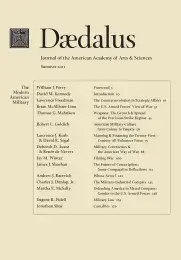Weapons: The Growth & Spread of the Precision-Strike Regime
For two decades, scholars and practitioners have argued that the world is experiencing a Revolution in Military Affairs brought on by the development and diffusion of precision-strike and related capabilities. The United States took an early lead in exploiting the promise of precision-strike systems, and the use of precision weaponry has given the United States a battlefield edge for twenty years. However, these weapons are now spreading: other countries, and non-state actors, are acquiring them and developing countermeasures against them. As the precision-strike regime matures, the United States will see its edge erode. The ability of the United States to project power will diminish considerably. In addition, U.S. forces, and eventually the United States itself, will be increasingly vulnerable to precision weapons in the hands of our adversaries.
For two decades, scholars and practitioners have argued that the world is experiencing a Revolution in Military Affairs (RMA) brought on by the development and diffusion of precision-strike and related capabilities, such as intelligence, surveillance, and reconnaissance; precision navigation and tracking; and robustly improved command and control. The United States took an early lead in exploiting the promise of precision-strike systems, and the use of precision weaponry has given the United States a battlefield edge for some twenty years. However, precision-strike systems are now spreading: other countries, and non-state actors, are acquiring them and developing countermeasures against them. As the precision-strike regime matures, the United States will see its edge erode. The ability of the United States to project power will diminish considerably. In addition, U.S. forces, and eventually the United States itself, will be increasingly vulnerable to precision weapons in the hands of our adversaries.
This essay begins by exploring the concept of an RMA as well as the general structure of military revolutions. Using this model, the essay then describes . . .
